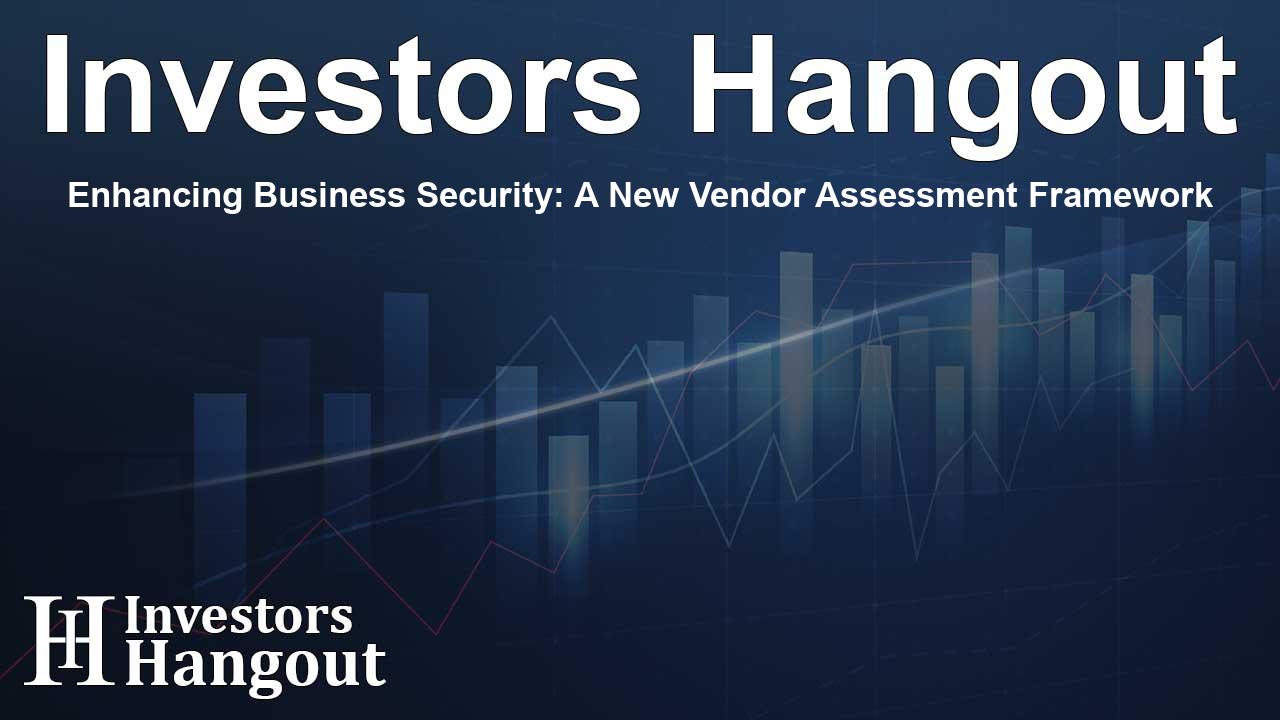Enhancing Business Security: A New Vendor Assessment Framework

Transforming Vendor Security Assessments
As cybersecurity threats linked to vendors continue to escalate, traditional assessment methods are proving inadequate. Info-Tech Research Group introduces a novel blueprint designed to enhance the vendor evaluation process by employing a risk-based framework. This innovative approach not only facilitates improved compliance but also significantly strengthens overall security measures. By emphasizing continuous improvement, Info-Tech enables security teams to efficiently adapt to and manage the dynamic nature of modern threats.
The Need for Updated Vendor Assessments
In today's landscape, vendor collaborations play a crucial role in the success of organizations; however, they concurrently present increasing security vulnerabilities. As regulatory scrutiny intensifies and incidents of third-party breaches rise, organizations find themselves at a crossroads. Conventional vendor security assessments, often rigid and general, are failing to meet current demands. A significant portion of these assessments creates undue burdens, prompting vendors to withdraw from bidding processes or leading business units to circumvent the assessment altogether, thereby putting organizations at risk.
Challenges with Conventional Approaches
Current assessment strategies often lack the flexibility and specificity necessary to accurately gauge risk. The one-size-fits-all approach typically hampers the effectiveness of security teams, leaving many frustrated and further complicating stakeholder relations. Info-Tech Research Group highlights the pressing need to shift toward more targeted methodologies that allow for better risk management.
Info-Tech's Groundbreaking Blueprint
In response to these challenges, Info-Tech Research Group has put forth a comprehensive blueprint titled Build a Vendor Security Assessment Service. This guide presents a risk-based approach that empowers IT leaders to prioritize critical aspects of vendor evaluations. By aligning assessments with actual business risks, organizations can streamline their processes while enhancing compliance and protection of sensitive information.
Ahmad Jowhar, a research analyst at Info-Tech, emphasizes, "Adopting a risk-based approach allows organizations to direct their assessments where they matter most, tailoring security efforts according to the service being evaluated and the organization's tolerance for potential risks." Moreover, he points out the value of fostering a culture of ongoing enhancement within vendor security risk management programs, which ultimately aids in identifying opportunities for further improvements.
The Importance of a Structured Process
Info-Tech advocates for a structured, end-to-end process to effectively manage vendor security risks. The firm recommends a continuous cycle of assessments that begins with initial risk evaluations and extends to ongoing monitoring and periodic reassessments. This proactive approach ensures that due diligence remains a priority even after a vendor has been selected, reinforcing an organization’s security posture against potential threats.
A Three-Phase Methodology
To assist organizations in implementing this methodology, Info-Tech outlines a clear three-phase approach to building a vendor security assessment service:
- Define Governance and Process: Establish a robust foundation by identifying requirements, clarifying roles, forming policies, and developing risk treatment strategies that align with the organization’s risk appetite.
- Develop Assessment Methodology: Create effective tools to evaluate vendor and service risk, including more focused questionnaires while avoiding broad or unnecessarily lengthy surveys.
- Implement and Monitor Process: Carry out and oversee the service with a continuous feedback loop, ensuring contracts reflect tailored security prerequisites and allowing for periodic reassessments.
This structured approach is vital for organizations aiming to thoroughly assess potential risks before engaging with vendors, ensuring every angle is considered. The assessment service encompasses a thorough evaluation of both service and vendor risks, allowing businesses to pinpoint vulnerabilities and enact strategic responses.
Core Components of the Assessment
Within the framework, several key components are focused on for thorough evaluations:
- Service Risk: Assess the potential impact of vendor-related incidents by evaluating the assets in jeopardy along with recovery costs.
- Vendor Risk: Determine the probability of an incident occurring, adjusted by the potential impact associated with each service.
- Composite Risk: Calculate the composite risk score by combining service and vendor risks, logging it in an inventory or register for future reference.
- Risk Treatment: Treat identified risks based on organizational risk tolerance, using a matrix to accept, mitigate, or reject threats.
- Record Details: Document the outcomes of assessments in a vendor inventory, adjusting the frequency of reassessments based on composite risk evaluations.
With this comprehensive blueprint, organizations can accurately assess the risks stemming from vendor partnerships, tailoring security efforts to safeguard against potential incidents. The strategy not only enhances transparency and accountability when working with vendors but also empowers organizations to maintain a strong security stance over time.
Conclusion
By integrating a risk-based mindset into vendor security assessments, Info-Tech Research Group revolutionizes how organizations approach security management. This method fosters alignment among stakeholders and promotes ongoing improvements within the vendor risk program, transforming potential operational hindrances into strategic assets. With the continuous evolution of threats, maintaining a vigilant and proactive stance on vendor security is more critical than ever.
Frequently Asked Questions
What is the focus of Info-Tech's new blueprint?
The blueprint emphasizes a risk-based approach to streamline vendor security assessments and enhance compliance.
Why are traditional vendor assessments inadequate?
They often adopt a one-size-fits-all model that fails to address specific organizational risks effectively.
How does the three-phase methodology benefit organizations?
It provides a structured framework for continuous evaluation and enhancement of vendor security risk management.
What are the core components of the vendor assessment service?
Key components include service risk evaluation, vendor risk assessment, and composite risk scoring.
What role does stakeholder alignment play in the assessment process?
It ensures that security efforts are focused and collaborative, facilitating continuous improvement across the organization.
About The Author
Contact Owen Jenkins privately here. Or send an email with ATTN: Owen Jenkins as the subject to contact@investorshangout.com.
About Investors Hangout
Investors Hangout is a leading online stock forum for financial discussion and learning, offering a wide range of free tools and resources. It draws in traders of all levels, who exchange market knowledge, investigate trading tactics, and keep an eye on industry developments in real time. Featuring financial articles, stock message boards, quotes, charts, company profiles, and live news updates. Through cooperative learning and a wealth of informational resources, it helps users from novices creating their first portfolios to experts honing their techniques. Join Investors Hangout today: https://investorshangout.com/
The content of this article is based on factual, publicly available information and does not represent legal, financial, or investment advice. Investors Hangout does not offer financial advice, and the author is not a licensed financial advisor. Consult a qualified advisor before making any financial or investment decisions based on this article. This article should not be considered advice to purchase, sell, or hold any securities or other investments. If any of the material provided here is inaccurate, please contact us for corrections.
